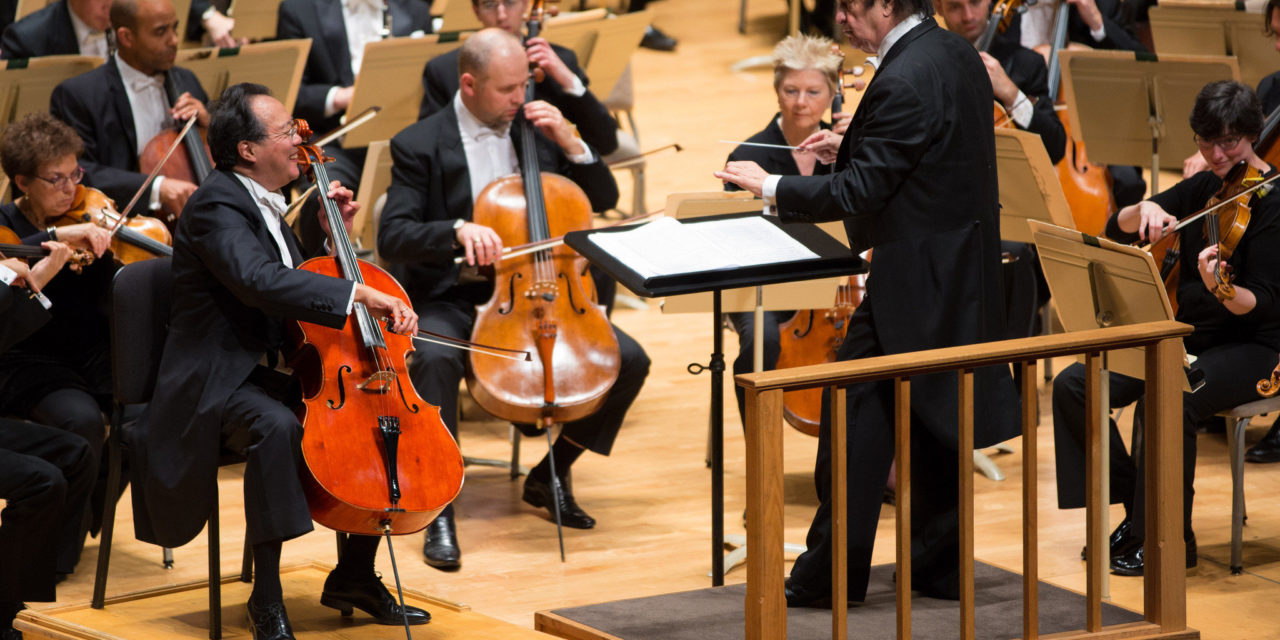If you’ve been playing the cello awhile, you might already know of all the pieces on our list of the most famous cello music. But if you’re relatively new to the cello, a parent trying to inspire a cello-playing child, or just someone who is interested in the cello and wants some new music to listen to, take a look at our list of some of the most famous pieces for the cello.
From Bach to Shostakovich big-hitters and some leftfield choices, these are just the greatest cello works ever composed.
1. Bach – Cello Suite No. 1
This is probably the most famous piece for the cello. Bach wrote six suites for the cello, and this is just the first movement from the very first suite. Written way back in the 1700’s the suites are a cornerstone of the cello repertoire, and this particular Prelude has really become so popular it’s arguably one of the most popular classical pieces in general, not just cello pieces. If you enjoy the Prelude, check out the other movements from the first suite, as well as the other suites.
2. Camille Saint-Saëns – The Swan from “Carnival of the Animals”
The Swan, written by Camille Saint-Saëns in 1886, is one of 14 parts of “The Carnival of the Animals”. The suites were written for fun, meant originally for a private performance. Saint-Saëns actually felt that they were too childish to be performed, and he would not allow them to be played except in private during his lifetime. The only piece that he released was The Swan.
3. Edward Elgar – Cello Concerto in E Minor, Op. 85
The great English composer, Edward Elgar, is probably best known to the general public as the composer of Pomp and Circumstance (aka the graduation song). His cello concerto was written shortly after World War One but didn’t really make a splash until the great cellist Jacqueline du Pre played it in the 60s.
4. Antonín Dvořák – Cello Concerto in B Minor
When discussing cello concertos, Dvořák’s Cello Concerto in B minor must be mentioned. Dvořák composed it in his last academic year, but only after much insistence from his friend, cellist Hanuš Wihan. Before that, he wasn’t entirely into this genre (he didn’t quite like the sound of the upper and lower registers of the instrument). Wihan, upon reviewing the score, made several suggestions and improvements, but Dvorak resisted the advice of his friend, (and, later, ordered his publishers to make no alterations, either), and the piece premiered in Queen’s Hall in London in 1896, with Wihan as the principle cellist. It is an amazing example of contrapuntal treatment and magically unique.
5. Britten – Suite for Cello No. 1
Dedicated to the one and only Mstislav Rostropovich, Britten’s first cello suite is a stark and demanding work that seamlessly locks together nine movements. The changes in character are perfectly suited to Rostropovich’s elastic playing style in particular, but cellists have long since found much to sink their teeth into.
6. Schumann – Cello Concerto in A minor
This marvellous concerto was composed during Schumann’s residency in Düsseldorf, and he composed it in only fourteen days. While he ever heard it performed live (Schumann died in 1856, and the piece premiered in 1860, it has been hailed as one of his masterpieces. The concerto is in three movements, and the entire composition uses several themes and motifs, tying all three movements together. This was a technique uncommon in his day. There is a playful smoothness in the cellos solos, and the piece will no doubt move its listeners for years to come.
7. Boccherini – Cello Concerto in B Flat
Having so many amazing works, Boccherini will always be remembered for his amazing work of Cello Concerto in B flat. This masterpiece is considered one of the finest concertos written for the cello. Boccherinis utilized the double stop (where the cellist plays two notes simultaneously), as well as the upper registers of the cello.
8. Lalo – Cello Concerto in D Minor
Edouard Lalo was one of the most visionary and thoughtful composers of his time. He earned his reputation for composing interesting and moving concertos long before this specific cello concerto in d minor. This piece of work was written by him in 1877. It is reminiscent of early Beethoven, at least partially. Its bold, bombastic opening and contrasting sections of elegiac lyricism, punctuated with orchestra hits and flourishes, create for an emotionally-dissonant listening experience.
9. Haydn – Cello Concerto No. 1
Of his two cello concertos, Haydn’s first just pips the second in terms of its gem-like quality. Melodies flow unbidden throughout all of its three dainty movements, with several moments where Haydn displays his fondness of the instrument’s vocal characteristics, leaving it hanging above the orchestra with deliciously long and declamatory entries.
10. Kodály – Sonata for Solo Cello
One man’s gimmick is another man’s innovation: Kodaly fundamentally altered the cello’s tuning to achieve the effect of his solo sonata, a characteristically veering work that has many champions in the cello world. This is truly a cellist’s cello piece.
Top 10 Greatest Cello Pieces You Should Know






